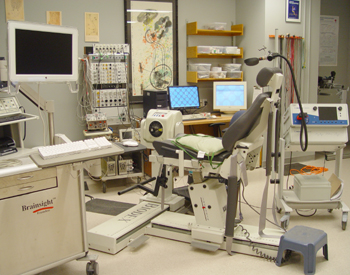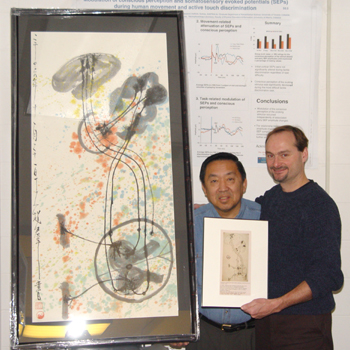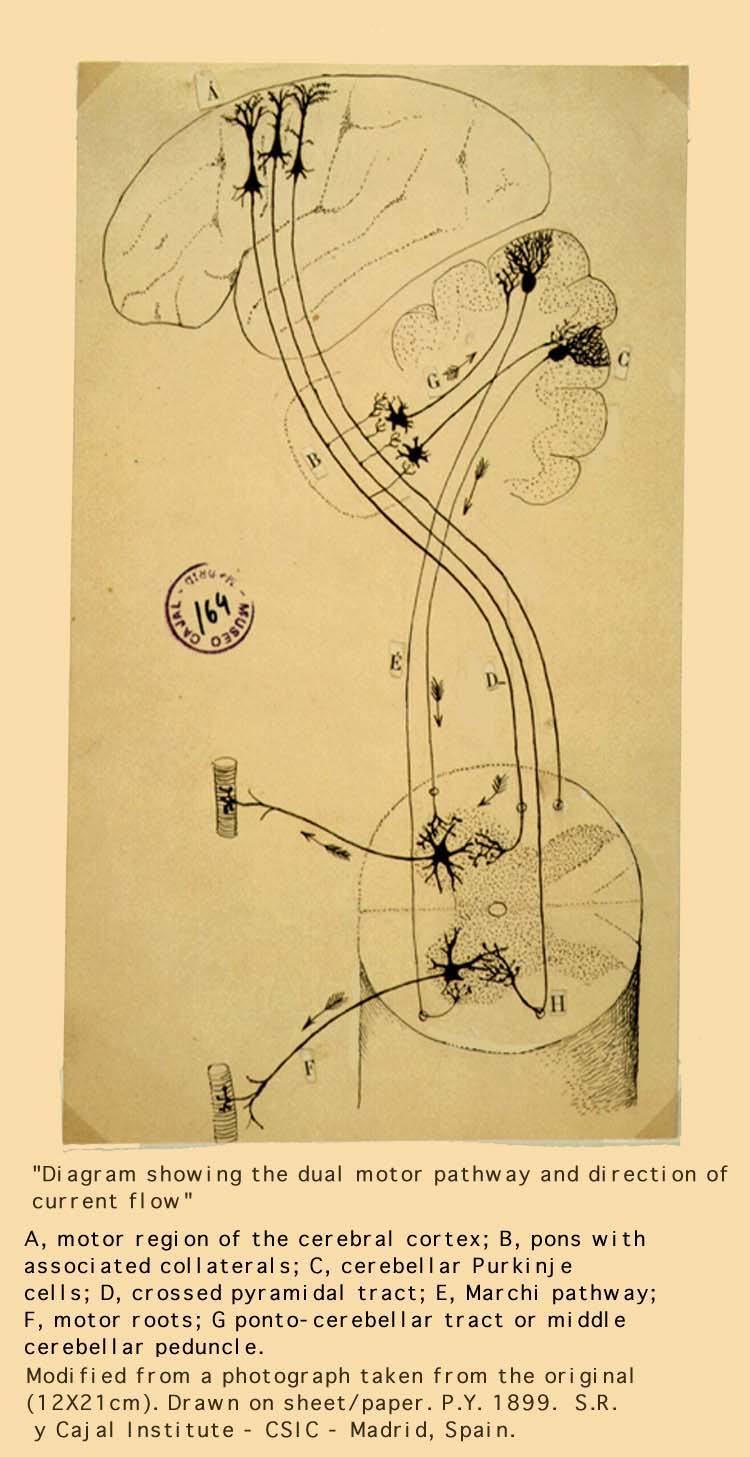About the Human Neurophysiology Laboratory
The laboratory is on the fourth floor (4-219) of the Van Vliet Complex in the Faculty of Kinesiology, Sport, and Recreation at the University of Alberta in Edmonton, Alberta, Canada.

Major Equipment:
- 16 amplifiers for bioelectric signals to record muscle and brain activity (Digitimer Neurolog System with four channels, four Grass P511 AC amplifiers and one Bortec AMT-8 "Octopus")
- Grass S-88 stimulator with constant current and stimulus isolation units (to stimulate nerve and muscle)
- Digitimer DS7A and DS7AH High Voltage Constant Current Stimulator (to stimulate nerve and muscle with higher voltages)
- Bicycle ergometer and custom made arm cycle ergometer (to study rhythmic movements of the legs and arms)
- Concept 2 Model D Rower (to study coordinated movements of the legs and arms)
- Magventure MagPro R30 transcranial magnetic stimulator (with MagOption)
- Spirit Treadmill (to study human walking)
- Biodex System III (to study isolated contractions of different muscle groups)
- Penny and Giles goiniometer system (to record movements about different joints)
- Brainsight TMS guidance system (for image guided TMS)
- Lumex (GF Health Products Inc.) Hydraulic Patient Lift (to transfer participants between wheelchair and Biodex)
- Custom written data collection (Labview) and analysis (Matlab) packages
- CED Spike2 (for spike detection and sorting in motor unit analysis).
Techniques:
- EMG recording using surface and intramuscular electrodes (recording the activity of human muscle)
- Human reflex studies including H-reflexes, stretch reflexes, tendon-tap and cutaneous reflexes
- Muscle stimulation for functional electrical stimulation (to improve techniques for restoring movement for persons with stroke or spinal cord injury)
- Somatosensory evoked potentials (recording brain activity in response to stimulation of sensory receptors in the arms and legs)
- Motor evoked potentials using transcranial magnetic stimulation (recording responses in arm and leg muscles from stimulation of the brain)
- Psychophysical studies (to identify mechanisms involved in the perception of human movement; kinesthesia/proprioception)
Neuro Art:
Dr. Aung presented the lab with his painting (left) of Ramón y Cajal's original sketch (right) of the nervous system. Click on the picture to see a larger version.


